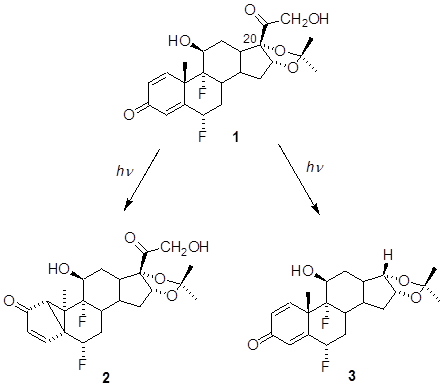Reports: ND454555-ND4: Photochemistry in Liquid Crystalline Media - A Novel Way to Control Selectivity of Photoreactions
Evgueni E. Nesterov, Louisiana State University
The second task was to optimize preparation of oriented nematic LC samples, and carry out photochemical
studies. The aligned LC solution of Thus, despite obtaining very promising preliminary data,
much work remains to be done in the year 2. In conclusion, we obtained promising preliminary results
which show that our proposed approach to control selectivity of photochemical
reactions by spatially selective excitation may actually work.












